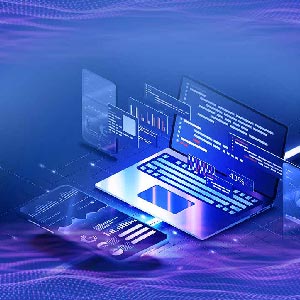THANK YOU FOR SUBSCRIBING
FREMONT, CA: Drones, or uncrewed aerial vehicles (UAVs), have evolved from niche gadgets to mainstream tools with various applications across various sectors. Technological advancements and innovative applications continually push the boundaries of what drones can achieve. Modern drones are becoming increasingly autonomous, thanks to AI and ML advancements. These technologies enable drones to execute complex tasks with minimal human intervention. AI-powered drones can analyze real-time data, recognize patterns, and make decisions, enhancing their efficiency and reliability in agriculture, surveillance, and disaster response applications.
Battery life has been a significant limitation for drones. Recent improvements in battery technology and power management systems extend flight times, allowing drones to cover larger areas and perform more prolonged operations. Innovations in energy sources, such as solar-powered drones, are also emerging, promising longer endurance. Swarm technology, where multiple drones operate in coordination, is another groundbreaking trend. The approach can dramatically enhance operational efficiency and effectiveness in various scenarios, from search and rescue missions to agricultural monitoring. Swarm technology divides tasks among multiple drones, enabling faster and more comprehensive coverage.
Drones are revolutionizing agriculture through precision farming. With multispectral sensors and cameras, drones can accurately monitor crop health, soil conditions, and irrigation needs. The data enables farmers to make informed decisions about planting, fertilizing, and harvesting, leading to increased yields and reduced costs. Drones can perform tasks such as spraying pesticides and fertilizers, ensuring even distribution and minimizing waste. Drones are becoming indispensable in inspecting and maintaining infrastructure such as bridges, power lines, and wind turbines. Their ability to access hard-to-reach areas safely and quickly makes them ideal for identifying structural issues, detecting wear and tear, and assessing damage after natural disasters.
The application improves safety by reducing the need for human inspectors to work in hazardous conditions. It lowers maintenance costs by enabling more frequent and detailed inspections. Drone delivery services are gaining traction, particularly in urban areas where traffic congestion can delay traditional delivery methods. Companies are testing drone delivery systems that promise faster, efficient, and environmentally friendly delivery of goods. Drones can deliver medical supplies, food, and other essential items, especially in remote or disaster-stricken areas where traditional delivery methods might be impractical.
The capability is crucial for efficient search and rescue operations, delivering medical supplies, and assessing damage in the aftermath of natural disasters. They can track wildlife, monitor deforestation, and evaluate the health of ecosystems with minimal disruption. In emergencies, drones offer rapid assessment and response capabilities. They can quickly survey disaster-stricken areas, providing real-time data to emergency responders. Drones with thermal imaging can detect survivors in rubble or locate people stranded in remote areas. Despite their potential, drones face regulatory, privacy, and safety challenges. Drones and drone technologies are poised to revolutionize numerous industries by enhancing efficiency, reducing costs, and enabling new capabilities.
Weekly Brief
I agree We use cookies on this website to enhance your user experience. By clicking any link on this page you are giving your consent for us to set cookies. More info
Read Also














